
Volunteer firefighters
Gaza, Beetle, Lily and Jaq, Inky, Tootle, Shrek and Skippy—every town and community has them. They style themselves as ordinary people but their lives and service are anything but ordinary. Unpaid and unheralded, they are our first line of rescue in 65,000 emergency calls a year, routinely saving the lives and assets of people they don’t know.
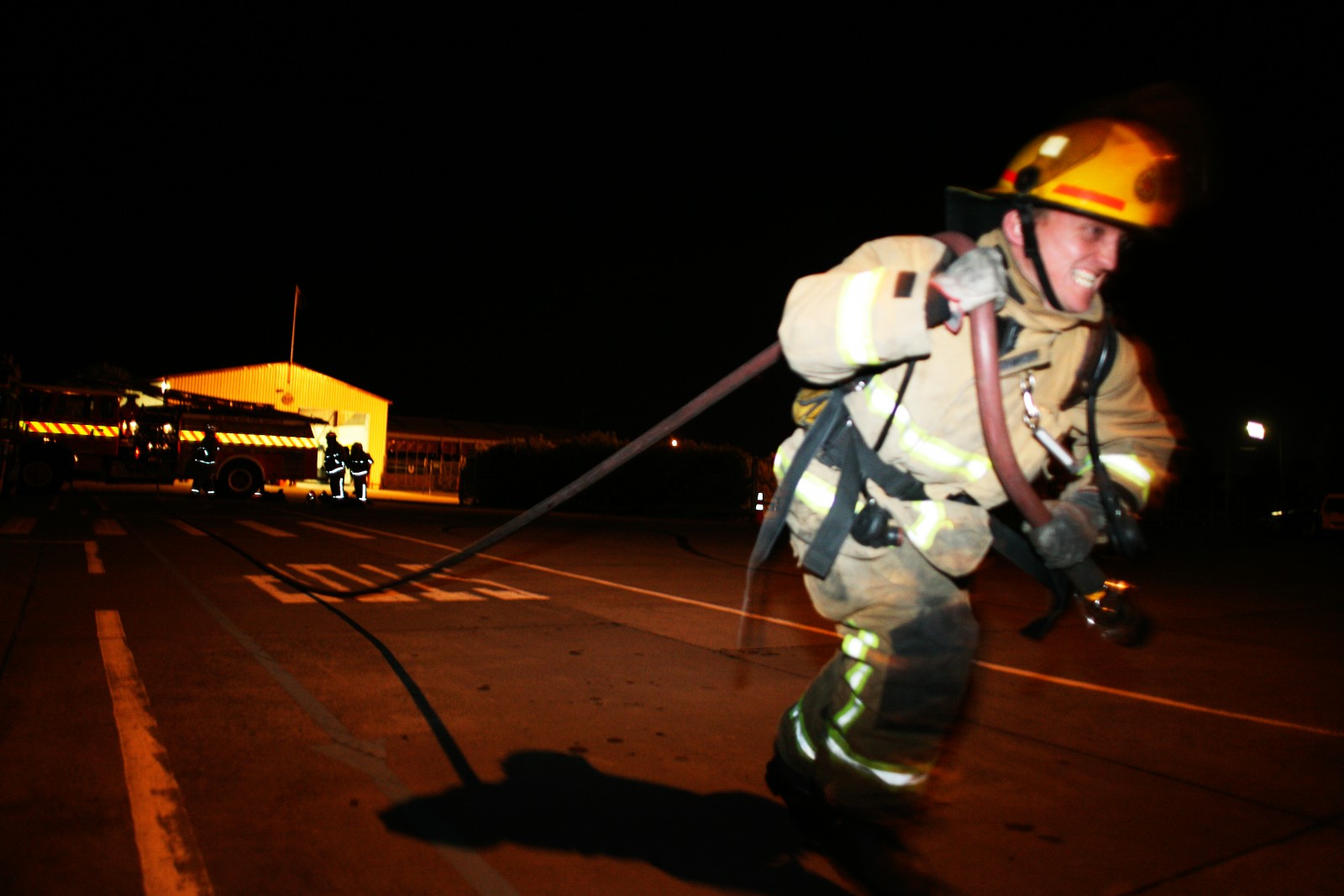
Though she had been waiting for nearly eight months, when it finally came, the moment still took Heather Reid* by surprise. Sure, she had felt it grow, and move, and turn inside her; the new life she so eagerly expected. She had studied the process, conferred with her midwife, attended tests and consultations with almost-religious regularity. She had planned for everything. Except that it would happen like this—six weeks early and when she was home alone—and that it would all be so quick, without any warning, and so painful.
It was nothing like she had ever known, not the usual Braxton-Hicks mock contractions she was so used to. This was pain of such intensity it choked her breath and voice, and curled her into a foetal position, making her bite her knuckles for relief.
She remembered what the midwife had said: if a baby is early it usually wants to come out in a hurry. She felt panic rise within her. She was on her own, miles from her husband, and even further away from the hospital.
On her knees, hugging the precious cargo in her belly, she crawled to the living room, waiting out the moments when the contractions immobilised her. She felt something pop inside and knew that her waters had broken. She knew she should call her midwife first but that barely seemed adequate. No, things were happening far too fast. She needed more help and quickly, and so with a shaking hand, she reached for the phone and dialled 111.
Follow the electronic signal, as it raced down the wires,from the Reid’s suburban house in Rolleston, north to St John’s Ambulance South Comms Centre in Durham Street, Christchurch. Her voice was increasingly frantic and punctuated with groans and screams, but the operator was calm and comforting. As he extracted the information from her the critical What and Where—the operator also activated another electronic signal which shot through the comms network, pausing briefly for approval at another emergency communications centre on Hereford Street, only a few blocks away. Then, given the “Go Ahead”, the signal rushed on, cloning itself into multiple callouts, activating pagers, switching on a siren.
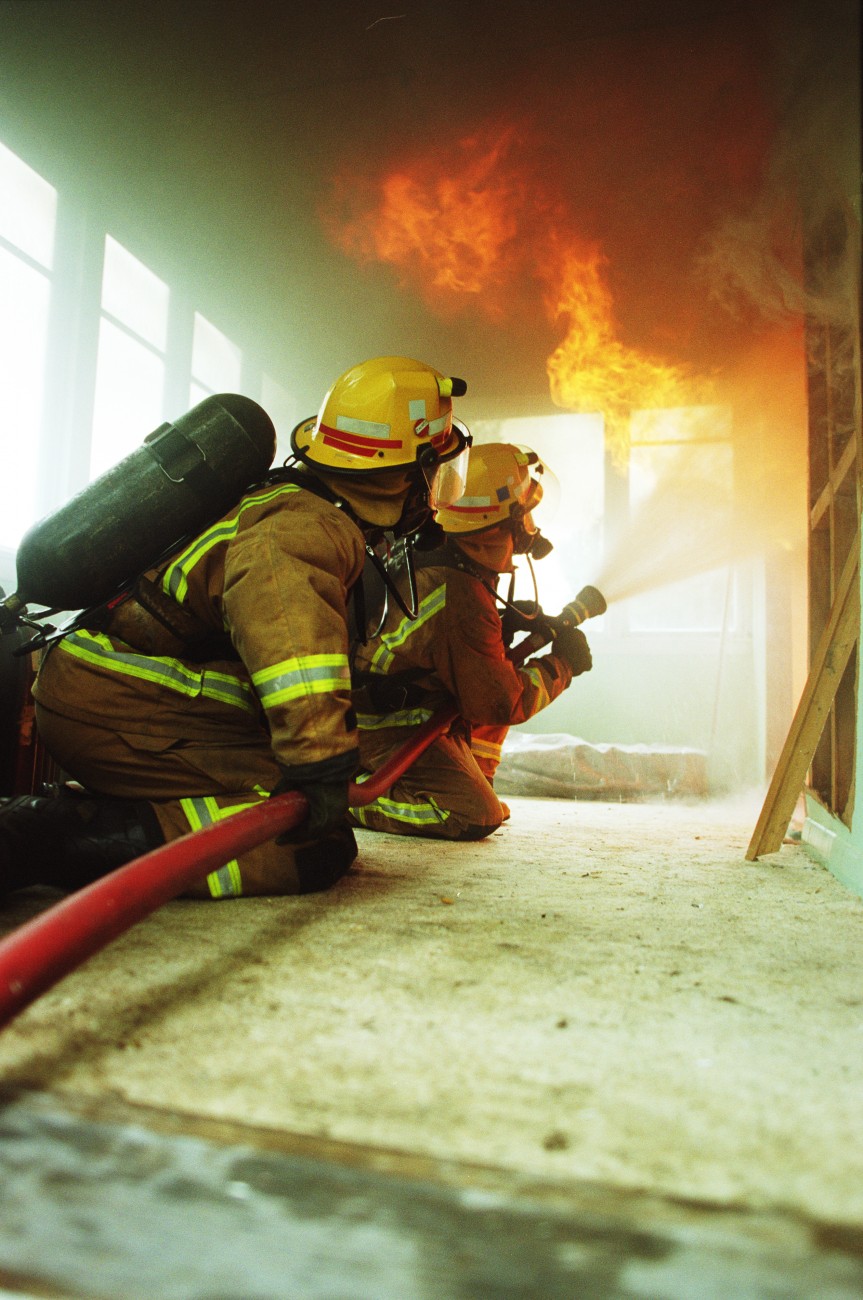
All the while, the operator crooned reassurances to Reid, whose pain and distress were palpable.
“Just hang in there Ma’am,” he said as he heard her cry out in pain again. “Just hang in there. Help is on its way.”
Two minutes later, she was still on the floor by the phone when she heard the approaching siren and saw red lights strobing through her windows. There was a firm knock at the door, then four uniformed men appeared. She stared in wide-eyed amazement. It was not an ambulance with paramedics in crisply starched scrubs, not a delivery room on wheels. The four men wore inky-blue paratroopers’ overalls and through the window Reid caught a glimpse of a fire truck with extendable ladders and rolled-down doors that housed coils of fire hoses. She could not believe her eyes. This had to be a mistake. They sent a fire truck to a childbirth?
Nigel Lilley, the officer in charge at the Rolleston Fire Brigade’s First Response Unit took one look at her and realised it was too late to go anywhere.
He felt just a twinge of apprehension. They’d practiced on mannequin dummies giving birth to mannequin babies, but he had never delivered a real baby. Still, the number one rule was to never show doubt.
He smiled to Heather Reid and said: “Ma’am, the ambulance will arrive shortly. Until then we’re here to help.”
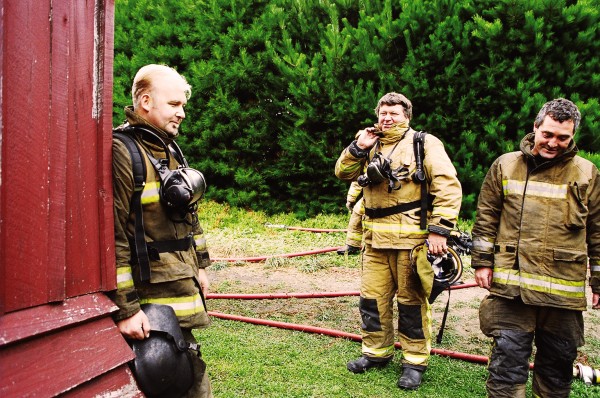
And so it was that four burly firemen delivered a healthy baby girl on the living room floor in Rolleston. When the ambulance—which had to travel from a station 30 minutes away—finally arrived, they were mopping up the scene and Reid was cradling her newborn daughter. Lilley took it as a sign that it was safe to recall his troops to base. They lingered a little, soaking up the magic of the moment that the happy arrival of new life had brought about. More commonly they had to deal with people at the other end of their life, or those coming perilously close to it. Then they withdrew tactfully, leaving the ambulance crew to the details.
Back at the station the gear was cleaned and neatly stowed away in readiness for another callout and officer Lilley was making coffee for the crew. He passed the cups around, took his own and slumped his rugby-prop physique into an armchair.
“Geez, that was intense,” he sighed, taking a sip. “Give me a good fire any day.”
Within less than twelve hours his wish would be granted.
[Chapter Break]
This entire incident would seem like a regular emergency dispatch, one of thousands occurring every day on the planet. But there is one more thing you need to know about it, and about all those mentioned here. Though you’d never realise it at the scene, these rescuers were not professional firefighters. They may perform like the pros, but they are unpaid volunteers, with jobs, lives, families and hobbies of their own. Lilley, for one, is a Rolleston publican, while Gazza loads planes at the airport. Inky drives trucks, Kaffer is an IT wizz (like soldiers and sports people, firefighters delight in nicknames). Among them there are builders and butchers, seamstresses and the unemployed. Yet their jobs and families and everything else become secondary the moment their pagers go off, when the station siren howls its summons. Then they down tools, drop whatever they have been doing and race to the rescue of complete strangers.
Sounds like a noble thing to do once in a while? It is, except that such a commitment is not just once-in-a-while. Last year, the Rolleston volunteer fire brigade—one of the busiest in the country—responded to 444 distress calls. On a busy day there may be five or six callouts, while the busiest day clocked in at 17. Their turn-up time—the interval between when their pagers ring and the moment the fire truck roars out of the station—is just 90 seconds. Impressive? Apparently not, because, as Lilley says, at every callout they’re trying to improve on that.
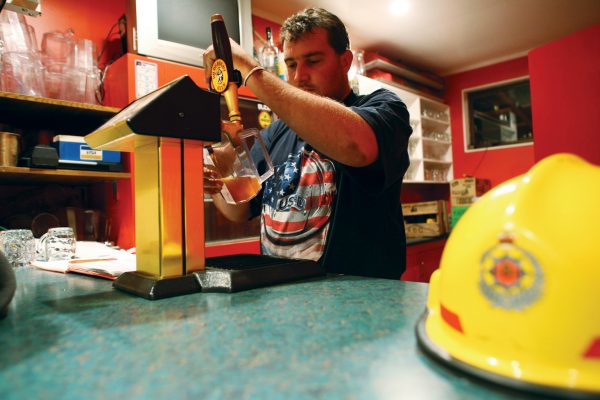

Around New Zealand there are thousands of men and women who exist in this state of perpetual readiness. With their callouts, weekly training sessions and weekend specialised courses—which can vary from emergency driving, abseiling and containment of chemical spills, to advanced first aid and, yes, assisting a childbirth—they spend more time on their fire-fighting than you would on a hobby. Their lives are ruled by their beepers. When planning a “night on the town”, or a day away, they need to notify their stations so that another person can cover for them.
They are rarely mentioned in the news. But every road accident, fire or personal tragedy would have been attended by these men and women. They secured it, contained the damage, took care of the victims, made sure no more people were hurt. They also cleaned up the aftermath, swept the shattered glass off the road, washed away the oil spills, and reassured the survivors, always moving with measured confident steps, balancing urgency with strict operational procedures.
“When on a job we’re all pros, it’s just some of us get paid for it and most don’t,” says Mike Lennard, a professional firefighter and the trainer of the South Island volunteers. “But we all pride ourselves that from the moment we arrive at the scene things don’t get any worse.”
[Chapter Break]
Up the staircase of an austere concrete building in suburban Christchurch a trio of volunteer firefighters are running in full battle gear yellow Gore-Tex fire suits, balaclava-like flash hoods and helmets with visors, fireproof gloves and gumboots. Their faces are hidden behind the masks of the BAs (breathing apparatuses) and, in the darkness and the 70°C heat, their shouts are muffled, their panting laboured. Only a weak flashing light reveals their figures, freeze-framing the progress they make. Despite the gloom and hellish temperature, the trio works with the precision of crack troops except that, as their enemy is fire, their only weapon is a water gun. The first man carries the squat nozzle, the other two help to lay the unwieldy fire hose along the stairs and around corners.
At a landing they crouch by the closed metal door, instantly regrouping.
“Ready?”
“READY.”
“Okay, open.”
One of the men yanks the door ajar while the nozzle carrier thrusts his weapon into the opening to fight off any flames that may lick at them from the interior. No flames come and the first man slams the door shut again.
“Okay, this time we’re going in. Ready? Let’s GO!”
The door swings open again and they burst in, the third man following close behind, dragging the hose, an obstinate red serpent, thick as a forearm and stiff with internal pressure. Now they are in an even deeper darkness and they have to feel their way ahead blindly, sweeping the floor with their feet, each probing out with one gloved hand while the other always stays anchored on the hose. Their voices are urgent, calling out reassurances, commands, and changes in directions. Still, confusion slowly creeps in, particularly after they find what they have come here to retrieve.
“THERE’S A BODY.”
“I’VE GOT HIM.”
The two lead men are about to pick the body up to drag it out the way they came when there is commotion off to one side, and the light comes on, followed by a relaxed, easygoing voice:
“Whoa! Let’s pause it right there chaps,” Gary Luff, the fire-fighting trainer, cuts in. “Have a look what’s happened.”
Somehow the hose has acquired a huge knot in it and the two firefighters, having rushed for the body, lost their prescribed formation and the proper contact with the hose.

Like a choreographer Luff corrects them, showing a more efficient and safer way of dealing with the situation he himself had designed: how to handle the body, how to drag it out using the fire hose as a guideline, keeping one heel on either side of it.
“Remember, the fire hose is your lifeline,” he reminds them. “If you get in trouble tie yourself to the end of it. This way the truck won’t go home without you.”
Then he turns off his light, plunging the interior into darkness once more.
“Let’s pick it up. The clock is ticking again,” he calls out. “GO!”.
This is how the heroes and heroines are forged and re-forged and, in the South Island at least, this happens at the Woolston training facility in Christchurch during a weeklong recruitment course, the initiation into this brotherhood of the flames. Some 120 recruits pass through the centre every year and Gary Luff is their chief trainer.
After 43 years in the Fire Service and a decade as a trainer, there isn’t much Luff has not seen, both in fire-fighting and in human psychology.
“Amazing things happen when people are under fire together,” he says. “Trust, bonds and lifelong friendships develop. Personal fires are put out, inner dragons slayed. Those with fear of heights climb ladders. Those with claustrophobia manage to don a breathing apparatus and crawl through tunnels. Introverts become team players. It gives me a tremendous buzz to be a part of and a witness to it all.”
Luff is well-known for designing training scenarios that are extremely realistic.
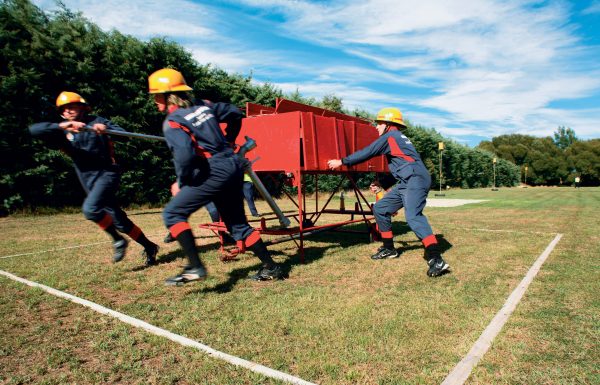

“It pays to learn well because if you do it wrong it can hurt like hell, which is why we’re not into the ‘let’s pretend’ approach during exercises,” he says. “When we do first aid or accidents, for example, we hire the local drama group. They do such a good job of it, with screams and fake blood and all, even though everyone knows it’s only an exercise, some of the recruits turn pale just looking at it.”
To further facilitate this reality training, the five-storey exercise building is equipped with strategically placed eject buttons which activate a sprinkler system and turn on powerful suction fans. “That’s for when things turn to custard during a live fire practice,” says Luff, although he also admits he can’t remember the last time they did.
As if setting fire to fully-furnished rooms wasn’t realistic enough, the Fire Service routinely demolishes unwanted homes and abandoned cars, allowing every trainee the baptism of real fire.
If houses or cars aren’t available, they use shipping containers dressed up as living rooms, equipped with TVs, drapes and junkyard furniture, complete with the usual culprits: toasters, heaters and gas appliances. Temperatures in those metal heat-boxes can get fierce. Luff says: “Firefighters are the people who rush in when everyone else is trying to get the hell out.” Which is partly why they are consistently voted the most trusted public service in New Zealand.
[Chapter Break]
All of the 111 calls requesting Fire Service assistance are directed to one of the three communications centre in Auckland, Wellington or Christchurch, which covers the entire South Island. The mainland’s Fire Comms occupies a small corner of one floor of the city police station on Hereford Street: two call takers, two dispatchers, a supervisor, and a lot of high-end computer equipment.
Andrew Norris, the supervisor of the shift during my visit, explains the workings of this place that is partly like an air-traffic control, partly a listening-out station, continually taking the pulse of both the natural and manmade trouble that befalls the entire island.
“Fire rescue is a bit of a misnomer because we respond to such a wide range of mishaps and accidents,” Norris says. “We send crews to everything from cats stuck up trees and chickens that have fallen down wells, to exploding barbecues, burst hot-water cylinders, controlled burn-offs that got out of control, ship fires in ports, chemical spills, helicopter crashes, train and truck collisions and highway head-ons with multiple fatalities.” They also frequently dispatch crews to assist elderly ladies terrorised by rodents, often the exceedingly vicious Mus musculus variety: the common house mouse.
“Our call-takers always try to gauge the caller’s level of distress,” Norris goes on, “because the elderly are often too embarrassed to have to ask for help. They give you more apologies for the trouble than details of what’s happening. They also frequently understate the situation and so we’ve learnt that it’s often better to send in a crew anyway, just in case. You have to remember, as a rule of thumb, the fire can double in size and ferocity with every passing minute. A smoking toaster or a faulty electric blanket can turn into a large-scale plantation fire in no time at all.”
As if to reinforce his words, a call comes in about a small scrub fire near Mataura in Southland and with a few strokes of his keyboard, Norris alerts the nearest crew. Seven hundred kilometres away men and women drop everything and race to their fire truck. Barely two minutes later a beep on Norris’s computer announces that the crew has already left the station and are heading into the hot zone. From the comms centre this seems like a computer game but at Mataura real people are fighting a real fire and the fire is winning.
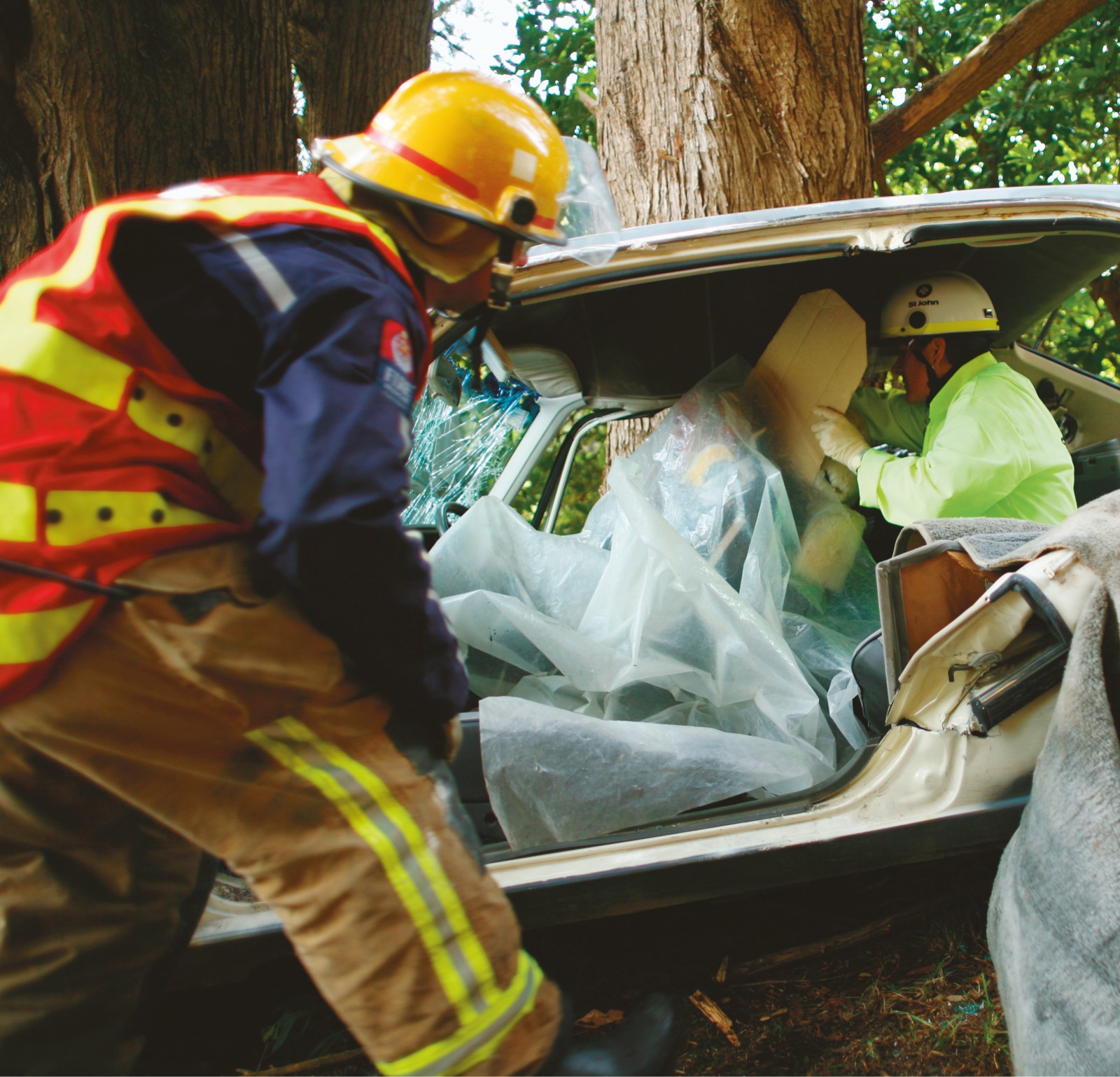
Like a good strategist Norris plays his cards carefully. Soon there are three fire trucks on the scene, plus a tanker, with more reinforcements on the way. Then another call comes in; this time it’s a medical emergency near Rolleston. A quiet day is rapidly heating up and I have to leave Norris to his fire-fighting.
In dispatching fire crews and their machines, Norris and his colleagues around the country make little distinction whether they are sending out paid staff, of which there are only 1600, or volunteers, who number over 11,000. Indeed the two often work side by side.
Together, the pros and the vollies staff 437 stations and operate around 800 fire trucks and tankers. For the past few years the number of emergency calls sat steadily around 65,000 annually, some 35 per cent of which have been false alarms. Real fires make for another 35 per cent of all calls, including some 4000 home incidents. The rest involve hazardous substances, natural disasters and medical emergencies (MEs).
In rural areas fire brigades attend anything from chain-saw accidents to cardiac arrests, because the fire crew can be on the scene much more quickly than an ambulance. In cases of cardiac arrest, which requires the use of defibrillators, their arrival can mean the difference between the patient surviving or not. It only takes five minutes before irreversible brain damage begins to set in. “The defibrillator jobs are one of the most satisfying to attend because just by showing up in time and performing a simple procedure you can save that person’s life,” Nigel Lilley says. “And it’s funny too, because they have absolutely no recall of what’s happened. They wake up and look at you totally surprised, and ask something like ‘What are you doing here?’ And you can smile and say: ‘Nothing, just passing through.’”
[Chapter Break]
The call came through on Saturday, when they were attending the Wings and Wheels airshow at the RNZAF base in Wigram. It was only a small fire in West Melton but the conditions were tinder-dry, and a strong southerly threatened to fan the blaze out. Lilley and senior station officer Mike Tasker were manning the Rolleston brigade’s yellow 5000-litre tanker and they raced to the scene as a support crew.
By the time they got there the fire had spread, forming a strong, fast-moving front. It razed fields, paddocks and windbreak hedges, then reached a plantation of pines and, finding more plentiful and combustive fuel supply, it accelerated, igniting the canopy into a uniform blaze, exploding individual trees, leaping the roads that were supposed to serve as firebreaks, growing in an ever-widening fan of destruction.
Lilley and Tasker found themselves racing along the left flank of the fire, attempting to head it off in what is known in the business as a pincer technique. Lilley was driving and Tasker rode the water gun, and though the speeds of the tanker and the fire were evenly matched, they were making good progress, almost succeeding in cutting the fire off to turn it back on itself. But then, unexpectedly, the wind changed—from the strong southerly to the dreaded nor’wester, hot and gusty, with a stronger bellows effect.
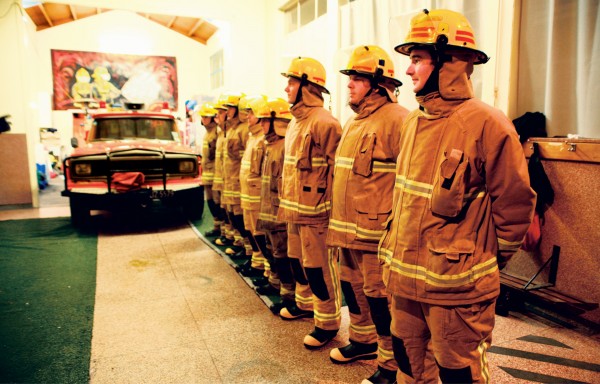
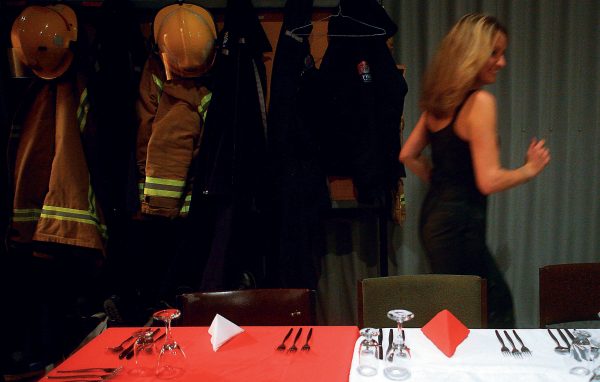
The fire front swung around, the inferno engulfing the rest of the plantation, and Lilley and Tasker found themselves driving through a tunnel of flames. “By then, it was getting really big,” Tasker recalled. “There were dozens of appliances all around the scene, and the choppers and fixed-wing planes were starting to come in. And we were right in the middle of it all. The smoke was so thick we had no idea where we were, whether we were going away from the fire or into it.”
At some point in the ordeal, Lilley, who is a man tempered by experience, could not suppress a plaintive cry, “Mikey! Let’s not get ourselves killed here!”
To make things even worse, the smoke starved their petrol Firemaster water pump of air, depriving them of the only weapon they had against the fire. There was nothing left but to make a run for it.
By now, having burst into the open, they were driving cross-country through paddocks, cutting fences and ramming gates, partly to get through themselves, partly to open the way for the horses and sheep to flee from the fire.
Meanwhile, at the nearby Orana Park open-range zoo now threatened by the blaze, the rangers did not have such luxury. With no time to truck their exotic beasts out, and as liberating Sumatran tigers, white rhinos, cheetahs and lions was not really an option, they were preparing to shoot the animals to spare them the agony of death in the flames.
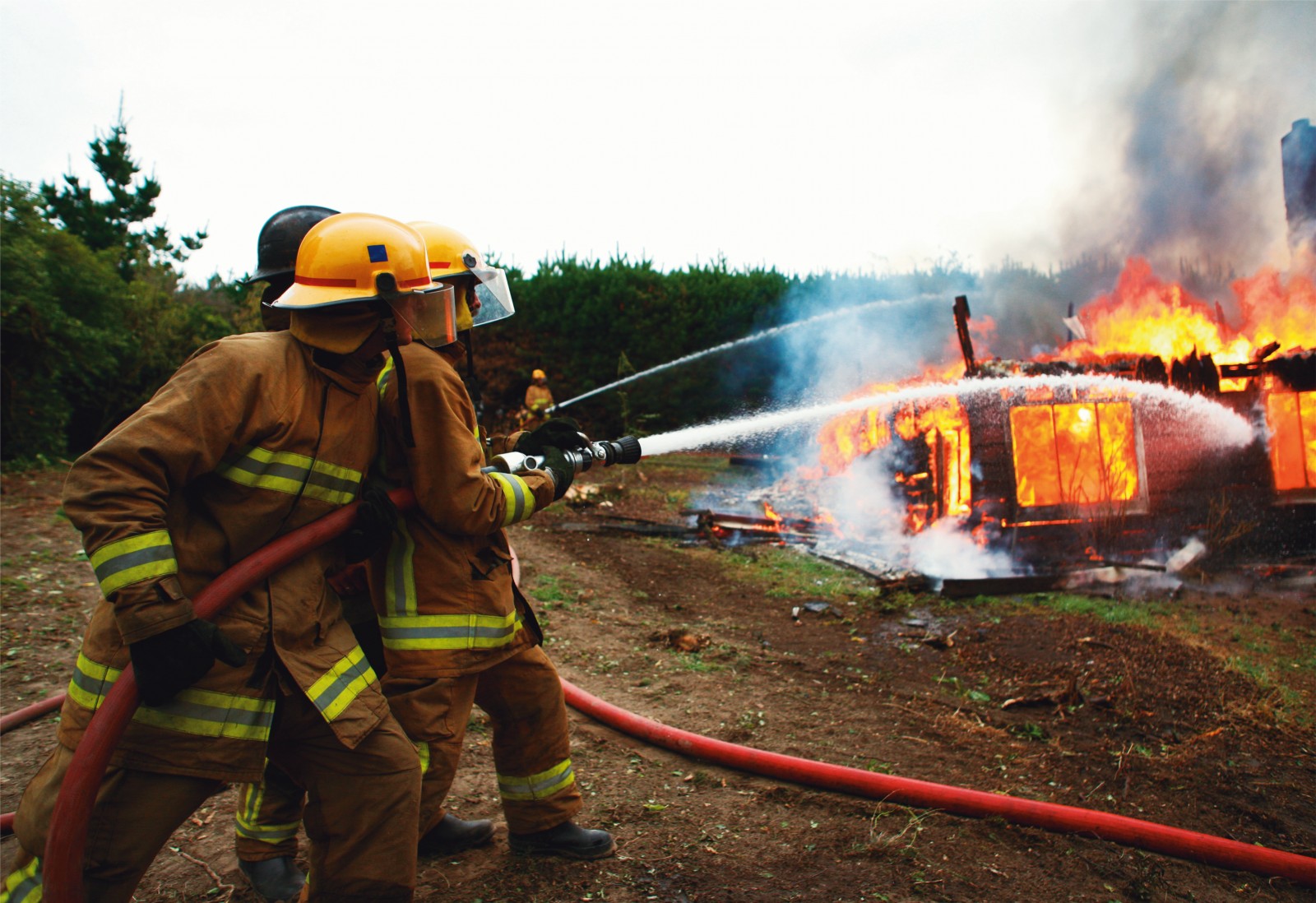
Lilley and Tasker got through to Orana where, alongside many other crews and appliances, they made their stand against the fire, restarting their pump and supplementing the water supply from the streams and moats of the animal enclosures. The fire took four days to put out in the end and Orana Park and its wild beasts survived unscathed.
“We were in the field for 24 hours, home for a brief nap, then went back out for another 24-hour stint. It took us three or four weeks to recover,” Lilley recalled. Then as an afterthought he added: “Best fire I’ve ever been to.”
The smile that ruffled Mike Tasker’s imperial moustache suggested that he shared the sentiment.
[Chapter Break]
Like most volunteer fire brigades around the country, from Stewart Island to Kaitaia, the Rolleston station is both a community centre and a dangerous sports club. Part of fire-fighting’s allure is the adventure, an opportunity for problem-solving and to rise to a challenge. However, the community that revolves around the brigade is equally alluring, which goes back to the time of the earliest Pakeha settlers when, out of necessity, everyone was a firefighter and each fire was an all-hands-on-deck call to arms against calamity.
This occurred especially frequently in Rolleston because the loam soils of the region are fast-draining, and store little or no moisture. The nor’wester blow-dries the land, desiccating wheat fields and pine, wattle and gum tree plantations into tinder. All that was needed to set them ablaze was a spark, which was provided by steam trains stoking for the uphill climb to Sheffield, en route to Arthur’s Pass. The six o’clock express was notorious. During dry periods fires occurred most evenings and the locals would beat them down with shovels, wet sacks and tree branches.
With time, the techniques and equipment became more sophisticated, the organisation of firefighters more formalised, but the community spirit remained.
“The smaller the community the bigger their involvement with the fire brigade,” says Rolleston’s chief fire officer Glenn Cockburn, who in his professional life is a St John’s paramedic. “In rural areas the fire station often becomes the hub of all social activities. At Rolleston, we’ve had birthday celebrations, weddings and funerals. In summer we often rig up a projector and turn the station into an open-air movie theatre and have film nights for the kids.”

Indeed, at back of the Rolly station is a large, well-appointed grassy patio, with an extensive children’s playground: trampoline, swings and seesaws, and a colourful McDonald’sstyle castle bought on Trade Me. An old concrete-block pool, once used for cleaning fire hoses, is now often filled with water for the kids to paddle around in. The scene is overlooked by a shady veranda featuring three hexagonal wooden tables and a barbecue big enough to grill an entire cattlebeast. There is a bar and a large kitchen, and enough space to accommodate all 30 firefighters and their families.
“You’ve got to remember that it’s the families that are the unseen heroes in all this,” says fireman Aron Brown, in his other life a Mercedes-Benz dealer in town. “We get to play with fire and save lives, but if you’ve promised your kids you’ll take them to the beach, and you’re all packed and ready to go, and the next moment your beeper goes off and you’re gone—again—it won’t be long before they start resenting this whole fire-fighting business. Which is why it’s so important the families are included in the life of the brigade, to feel a part of it.”
Looking at the playground again I can’t shake off an impression I’ve seen it somewhere before. Yes, the resemblance is remarkable. With its crawl-throughs, swings and bridges, the playground is a scaled-down version of the obstacle course where the firefighters perform their drills during their weekly training sessions. A coincidence?
“Not at all,” Mike Tasker grins. “You’ve got to get them when they’re young, which is why we’ve created this play station. After all, they are the next generation of firefighters.”
[Chapter Break]
Driving back home, wondering at the phenomenon of volunteer fire-fighting, I stop for a break at the old Rangitata River bridge near Arundel. A man in green-and-lime farming overalls is fussing about in the boot of his white station-wagon. It is the height of the salmon season and he is rigging up for some after-work fishing, assembling an ancient rod with a rickety egg-beater reel, threading the line. He puts on a cap with a logo that reads Fire Rescue.
His skin is tanned into cracked leather from years in the sun, and black rings of engine grease around his fingernails suggest that he can drive a tractor and fix one as well. And, it transpires, he has been a fireman for 37 years, since he was 16. Car crashes mainly, not so many fires, though a few good ones. Big plantation blazes. Exciting stuff. Fire-fighting is just the thing a bloke does in the country, to help others, to socialise.
“I only quit cause I buggered me back,” he says. “Best team sport you could ever play, and an adventure too.”
He puts on a weight-lifter’s belt, wide and made of leather, just in case he does hook into a big salmon. I watch him pace down the bank, lobbing a hefty ticer across and into the turquoise waters, and realise I have not even asked for his name.
In all likelihood he’d just give me his nickname. Not ones to brag about their deeds, or to claim any credit for them, volunteer firefighters are the anonymous heroes.
















